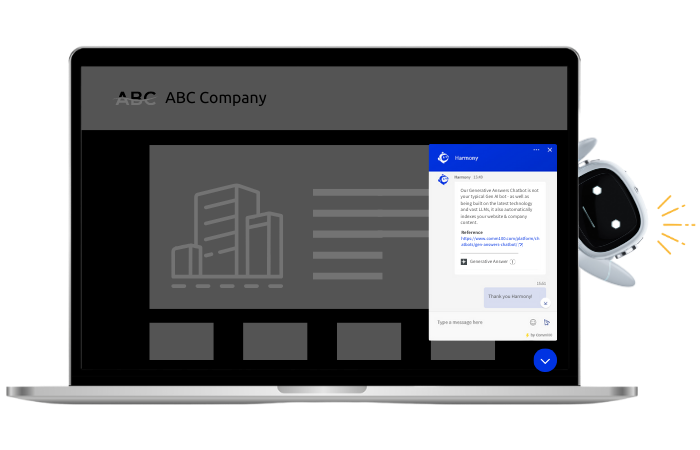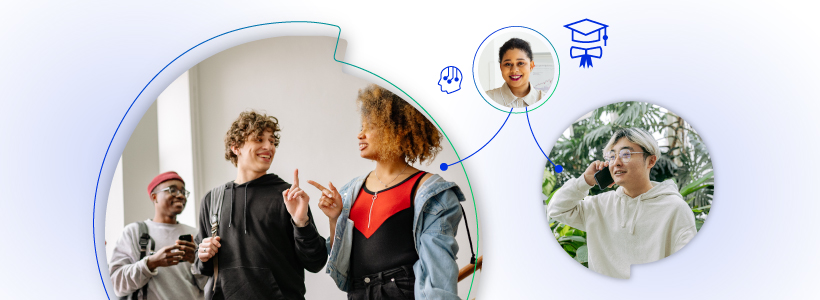This is the second article in a four part series on creating a live chat strategy.
Part 1: Why Live Chat? Developing Strategies & Goals
Part 3: Who Really Needs Assistance? Influencing the Choice to Live Chat
Part 4: How Are We Doing? Measuring Live Chat Effectiveness
Today’s customers more than ever are turning to live chat for communicating online with product and service providers. It’s important to know what customers expect when utilizing the live chat channel to interact with your company. Research shows that consumers ranked the following elements as their top three when it comes to experiencing great online customer service:
- Getting my issue resolved quickly. (82%)
- Getting my issued resolved in a single interaction. (56%)
- Dealing with a friendly customer service representative. (45%)
Let’s take a look at how companies and organizations can strive to meet all three of these expectations.
Getting My Issue Resolved Quickly
Customers are very busy people these days, often overloaded, overworked, and constantly multi-tasking throughout the day. Should an issue arise which requires one to contact companies and organizations for resolution, you can bet time is of the utmost importance. How can this demand for speed be consistently met to insure that customers receive a great online experience?
Initially, it’s imperative to get the customer to the right person for their particular issue. In instances where companies have a diverse customer base, live chat features such as pre-chat surveys assist in directing customers to the proper agents. Remember in the “old days” being told “We don’t handle that in this department. I’ll have to transfer you.” when initiating contact over the phone? This feature assists in creating great online experiences by insuring customers are serviced by agents well versed with their particular issue.
A key metric to quick resolution is first response time. This metric is based upon the amount of time it takes for an agent to acknowledge a customer’s chat request. The customers live chat experience begins right here. High first response times indicate the customer is waiting to be serviced which is equivalent to customers waiting in the call queue for someone to answer and begin a phone conversation. Customers don’t take kindly to waiting and just as they may choose to abandon the attempt to be serviced via phone, they may also choose to abandon their attempt to chat if not acknowledged in a timely manner. Research data indicates that an acknowledgement within 30 seconds keeps customers happy while anything over a minute may lead to customers becoming frustrated and ending the chat attempt.
When faced with high chat volume, proactively advise customers of the expected wait time. This one step lets the customer know that their time is important. Take advantage of the send messages feature to update customers during the wait time. This is a dual impact feature – you can apologize for the wait while providing a new expected wait time and it keeps the customer from feeling neglected while waiting. They can now make the decision to standby for assistance or attempt to chat at another time. Once engaged with chat agents, customers expect quick resolution.
Give your chat agents an edge through utilization of the typing indicator feature which allows agents to see what customers are typing. Agents can begin preparing responses as they wait for the customers to complete their input which may help to reduce the overall interaction time.
Utilize the reporting capabilities of your chosen live chat platform to identify trends in chat volume, interaction length, dropped chats and individual agent performance. Report analysis will assist in identifying both live chat channel and agent improvement opportunities.
While quickly acknowledging customer requests for live chat is important, it’s imperative that chat agents are equipped with the appropriate product and or service knowledge in order to become adept at asking the right questions in order to quickly resolve customer issues. This leads us to the next most important customer expectation – getting issues resolved in a single interaction.
Getting My Issue Resolved in a Single Interaction
As we stated earlier, today’s consumers are busy and would rather not spend an inordinate amount of time attempting to get issues resolved. Today’s companies and organizations are tasked with providing resolutions during the first interaction. Data from StellaService for the past six months show 88% of issues were resolved during the first interaction when handled via live chat. This compares to a 92% first time resolution rate for issues handled by phone and 63% for issues addressed via email. It’s clear that live chat is an effective method for resolving customer issues.
Customers expect to receive competent service during the initial interaction. When customers are required to make multiple attempts to get issues resolved, companies may lose credibility which can certainly impact customer satisfaction and long term revenue.
Make sure chat agents have the proper tools to provide “first chat resolution”. Provide comprehensive product and services knowledge training to insure their competency when interacting with customers. Create a robust knowledge base for quick retrieval of information. Doing so leads to confident agents meeting the customer’s requirement for resolving issues during a single interaction. As some customers are “do it yourselfers”, agents may be able to tactfully direct customers to the knowledge base for guidance on successful issue resolution without additional agent assistance. As customers utilize the knowledge base to self-serve, agents become available to assist other live chat customers.
Recommended for you: One and Done: How to Optimize Your First Contact Resolution Rate
Dealing with a Friendly Customer Service Representative
Now some might ask – We’re talking about chatting here, not talking over the phone. How can customers determine whether a chat agent is friendly? When communicating via the more traditional method, an agent’s voice tone, voice inflections and word choice are drivers for a customer to determine that yes, my agent was friendly. To be considered as friendly, a chat agent must utilize the same skills – the difference being the agent’s fingers are his/her voice.
Just as you would verbally say “Please” and “Thank You” when communicated verbally, do the same during a live chat. Advise the customer when the need to pause arises – just as you would during a phone call. If an extended pause is required, provide the customer with an approximate “pause time” just as you would for a “hold time” during verbal communication. Word choice along with punctuation are indicators of your “voice tone” when live chatting with customers. Use the exclamation symbol when communicating positive information – That’s great! Glad to help! Thanks for chatting today! – as this communicates enthusiasm to the customer.
Just as you would apologize for any issues or inconvenience during phone conversations, a simple “Sorry for the inconvenience” or “I apologize for that” conveys empathy to the customer. Personalize the conversation by utilizing the customer’s name. Use comments such as “have a nice day” or “enjoy your weekend” when ending the chat sessions as this makes the customer feel good. Integrate messages such as these into your live chat channel via the canned messages feature. Not only will this help to insure your agents have a repertoire of customer friendly statements to choose from, but may possible lower the interaction time as agents are freed from repetitively typing the same message.
Keep Customers Happy by Meeting Expectations
Those are the three major expectations of chat customers. At Comm100, we believe that it’s important for companies to provide the proper tools to allow agents to provide a great online customer experience. Our live chat product gives companies the ability to analyze how well their live chat channel is operating along with individual chat agent performance. Customers will benefit from your having ability to measure both agent and channel effectiveness. Want high customer satisfaction ratings? It’s pretty simple – Meet Their Expectations.
Download now: How to Create a Dynamic Live Chat Strategy
Whether you are looking to implement a live chat program or to find ways to make it more successful, you absolutely want to make informed decisions.
Download Now
eBook







